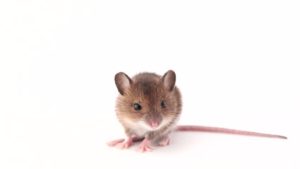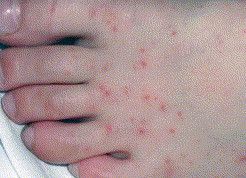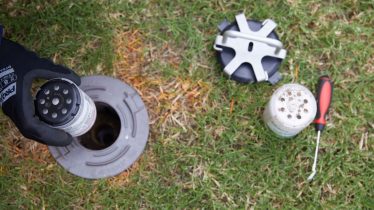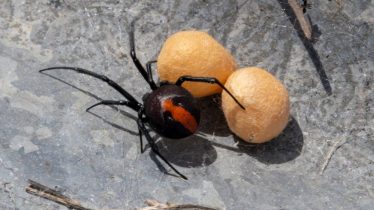Mouse in the house?
Dunrite Pest Control – Mouse in the house?
Rodents
The rodents I am discussing for our clients refers to the common rat and mouse issue we all have in our houses each year. Yes, even pest controllers have this issue. What people don’t understand is how dangerous rodents can be, even fatal. Rodents can spread 35 different diseases directly and a multitude of diseases indirectly. This is discussed under “Health Risks”. The following information is a little background before we get into the death and destruction of rodents. As a matter of interest, some species of rodents not being discussed are; squirrels, prairie dogs, chipmunks, porcupines, beavers, guinea pigs, hamsters, gerbils and capybaras. If you do come across any of these in Brisbane, Gold Coast, Logan or Bayside, or anywhere in Queensland, be sure to let me know. (except Guinea Pigs. We all know someone who has a Guinea Pig).
You will generally see a mouse in the house when you are quietly sitting watching TV or reading, when from the corner of your eye a glimpse of movement catches your attention, and by the time you turn to look there is nothing there. The inexperienced will start to think they are going a little loopy after doing this a couple of nights in a row. UNTIL you catch a real look at a low flying fast moving mouse that will become bigger each time you regale the story, much like the fish that got away. This is generally when you realise you actually have a mouse in the house. If you can poke your finger through a hole, that hole is big enough for a mouse. If you can poke your thumb through a hole, that hole is big enough for a rat to enter through.
Rodents (from the word ‘gnaw’) gnawing to helps reduce the length of their teeth (incisors). The incisors, if left without gnawing will grow approximately 15 cm a year. This is why they gnaw. Rodents will gnaw anything and everything including timber and electrical wiring. Rats are purported to have been responsible for over a million (1,000,000) deaths directly or indirectly in the last 100 years. If rodents gnaw on the wiring in your house and this causes a fire it can place you and your family at risk; this could even cause serious injury (or worse) by an indirect cause. I will list a number of medical or health issues related to rodents below. Rather scary!
If you have a rat or a mouse in the house, you are likely to have several, not one. Rats will breed better than rabbits. The rats will have 6 – 10 babies per litter that will be matured at 3 months and begin to reproduce. A couple of rats can create 2000 rat babies per year if allowed to go unchecked. If they have an average of 8 babies every 21 days (gestation period) and those babies have babies….Doing the maths ! That is a shocker !!!

Do I have a Mouse in the house?
Rodents are generally more active at night and are more common in late summer/early autumn, apparently. Most of our work is at the beginning of winter. We have found rodents come into houses to nest in the roof void, among the insulation to stay warm and to keep the babies warm as winter starts to set in. It is a warm and cosy environment that retains the heat of the day. If you see rats or mice during the day, this usually indicates high numbers or that there is a good food supply nearby.
When inspecting for rat and mouse activity, look for:
- Black, moist, thin droppings.
- Debris left from rodents gnawing items like snail shells, almond shells and chop bones.
- Food left for pets which has gone missing.
- Signs of gnawing damage on fruit, and vegetables or materials such as wood, insulation and electrical cabling.
- ‘Runways’ which have formed when rodents have used the same path such as through vegetation/gardens or along fences.
- Greasy rub marks on walls or skirting boards where rodents travel regularly.
- Burrow holes close to sheds or under debris.
- BBQ plates that just don’t smell right. (keep your hood open when not using)
- If you have a dam, look for small holes (bigger than a 50c piece size) in the side that will allow a rat to harbour.
- Under chook pens or permanent water containers. Ie, old baths set into the ground for animals/chooks/ducks

Avoiding rodent problems
Rodents are well adapted to living in human environments. To reduce their
numbers on your property:
Dispose of food scraps promptly and clean food preparation areas thoroughly.
Inspect living and working areas for potential rodent entrances and block
them where possible with concrete, hard setting filler, steel wool or heavy gauge sheet metal.
- Ensure rubbish bins have tight-fitting lids and are regularly emptied.
- Keep your home and property clear of rubbish.
- Keep stacked materials such as wood and bricks at least 30cm above the ground to minimise hiding / nesting / thoroughfare of rats and mice.
- Regularly clean out sheds, storage areas and dispose of unwanted items.
- Remove unwanted undergrowth – cut back grass, trees, bushes, and creepers which may provide cover or access to the roof.
- Dispose of fallen fruit, seed and waste from aviaries and chicken pens and pet faeces.
- Do not use open compost heaps.
- Do not compost any animal products (fish, meat, chicken, cheese, butter) or pet faeces.
- Leave out just enough pet food for pets to eat soon after it is placed there.
- Store poultry food in vermin proof containers with close-fitting lids.
- Block access points to cupboards containing food and food-preparation
utensils. - Cover rainwater tank openings and floor vents with wire mesh no coarser than 1mm and check and maintain these regularly.

Health Risks
Disease is easily and quickly spread through the feces and urine of rodents, not to mention bites . Some of the many diseases rodents carry include:
- Hantavirus Pulmonary Syndrome (HPS) Potentially Fatal
- Rat Bite Fever Potentially Fatal
- Leptospirosis Potentially Fatal
- Bordetellosis (Bacteria – Can cause whooping cough)
- Encephalomyo carditis (Cardio Virus)
- Pseudorabies – not so common (herpes family)
- Salmonellosis – Rarely Fatal in developed countries
- Swine dysentery – We are only ever a carrier, fatal to pigs, not humans
- Swine erysipelas – erysipelas Bacteria causing rash and pain – Pic below
- Toxoplasmosis – Check CDC website. Dangerous for pregnant and immunocompromised. It is a brain parasite.
- Trichinosis – parasitic round worm causing muscle pain, eye problems, skin rash and or gastro
Hantavirus Pulmonary Syndrome (HPS): HPS was first singled out as a disease in 1993. Since then, there have been more than 500 HPS deaths reported. While a bite from a mouse can transmit the disease, direct contact isn’t necessary for infection. Inhalation of the feces and urine or touching items contaminated by mice can also lead to infection and, possibly, death. Children are more susceptible to this disease than adults.
Rat Bite Fever: Rat bite fever manifests three days to three months following skin contact or a bite or scratch from either wild or pet rodents such as rats, mice, and gerbils or by ingesting contaminated food or drinks. Symptoms include chills, fever, vomiting, headache, and muscle and joint pain. Two to four days after onset, a rash appears on the hands and feet, and joints may become red, swollen. and painful. Without treatment, the patient may suffer long-term or even permanent damage.

Leptospirosis: Leptospirosis is carried by many animals, both tame and wild. When a person comes into contact with the bacteria, either through skin contact (broken skin) or the saliva of an infected animal, a variety of symptom can appear, including: jaundice, vomiting, muscle pain, chills, headache and fever, to diarrhea, rash and abdominal pair. However, sometimes no symptoms occur. If left untreated, liver failure, respiratory issues, kidney damage, meningitis, and rarely, death can occur.
Hantavirus Pulmonary Syndrome
Hantavirus Pulmonary Syndrome (HPS) is a severe, sometimes fatal, respiratory disease in humans caused by infection with a Hantavirus. Breathing in tiny airborne particles that come from rodent urine. Touching rodent urine, saliva, or droppings. Coming in contact with dust contaminated with the virus. Being bitten by an infected mouse.
Symptoms usually start 2 to 3 weeks after a person has been exposed to the virus. Early symptoms may include fever and chills, Muscle aches and headache, Fatigue, Nausea, vomiting, diarrhoea, and belly pain. There is no cure or vaccine for HPS. Treatment involves supportive therapy, including mechanical ventilation with supplemental oxygen during the critical respiratory-failure stage of the illness. Early recognition of HPS and admission to an intensive care setting offers the best prognosis.
People are advised to avoid direct contact with rodent droppings and wear a mask while cleaning such areas to avoid inhalation of aerosolized rodent secretions. The reported cases of Hantavirus infection (HFRS) in Australia is approximately 15 cases per year and its Seroprevalence (%) is 1.2 (0.02-1.8)
Leptospirosis occurs in all parts of Australia with the highest incidence of the disease in Queensland and Victoria.4 Leptospirosis is a notifiable disease in all States and Territories of Australia.
- Leptospira bacteria usually enter the body through skin cuts or abrasions, and occasionally through the lining of the mouth, nose, and eyes.
- Outbreaks are usually associated with exposure to flood water contaminated with the urine from infected animals.
- Many different animals can harbour Leptospira bacteria in their kidneys.
- Water, soil and mud, that has been contaminated with animal urine can be the source of infection.
- Eating contaminated food or drinking contaminated water has occasionally been responsible for transmission.
- Person to person transmission is rare.

Dunrite will continue to add information to the health issues as they become apparent. There are basic things you can do to protect you and your family from these rodent transmitted diseases and the effects of a rodent infestation. Be pro-active, keep treatments up to date and keep all foods in containers that will stop rodents, weevils, beetles etc… contaminating your food.


